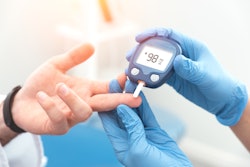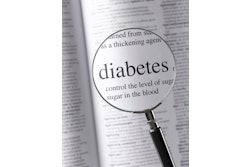
Genetics may be a key player in the development of type 2 diabetes (T2D) related to periodontitis, highlighting potential targets for new treatments, reports research recently published in BMC Oral Health.
Furthermore, the genes MCUR1, RAP2A, FOS, PANX1, NFIX, and WNK1 may be associated with periodontitis-related T2D and insulin resistance, the authors wrote.
"Periodontitis was associated with a higher risk of T2D. MCUR1, RAP2A, FOS, PANX1, NFIX and WNK1 may play important roles in the pathogenesis of periodontitis-related T2D, shedding light on the development of potential drug targets, " wrote the authors, led by Xindi Wei of the Shanghai PerioImplant Innovation Center in China (BMC Oral Health, May 29, 2024, Vol. 24, 635).
To investigate the causality between periodontitis and T2D, a Mendelian randomization (MR) analysis was conducted. Bioinformatics tools, such as gene ontology and pathway enrichment analyses, were used to study the common differentially expressed genes (DEGs) in both periodontitis and T2D.
MR and colocalization analyses were then applied to explore the causal links between the expression of potential pathogenic genes and the risk of T2D. Additionally, single-cell expression analysis was used to identify the cellular localization of these genes, they wrote.
Genetically predicted periodontitis was linked to a higher risk of T2D (odds ratio [OR]: 1.469; 95% confidence interval [CI], 1.117 to 1.930; p = 0.006) and insulin resistance (OR: 1.034; 95% CI, 1.001 to 1.068; p = 0.041). The study identified 79 common DEGs associated with both periodontitis and T2D, which were primarily enriched in CXC chemokine receptor binding and the interleukin-17 signaling pathway, they wrote.
By integrating genomewide association studies with the expression quantitative trait loci from peripheral blood, six candidate genes were prioritized: two risk genes (RAP2A, MCUR1) and four protective genes (WNK1, NFIX, FOS, PANX1) in periodontitis-related T2D. RAP2A, enriched in natural killer cells, demonstrated a significant predisposing risk for T2D (OR: 4.909; 95% CI, 1.849 to 13.039; p = 0.001) and showed strong genetic evidence of colocalization, they wrote.
However, the study had limitations. Its findings may not apply to other populations because it only included individuals of European descent, the authors added.
"MR analyses detected that periodontitis was causally associated with higher risks of T2D and insulin resistance, " Wei et al wrote.




















